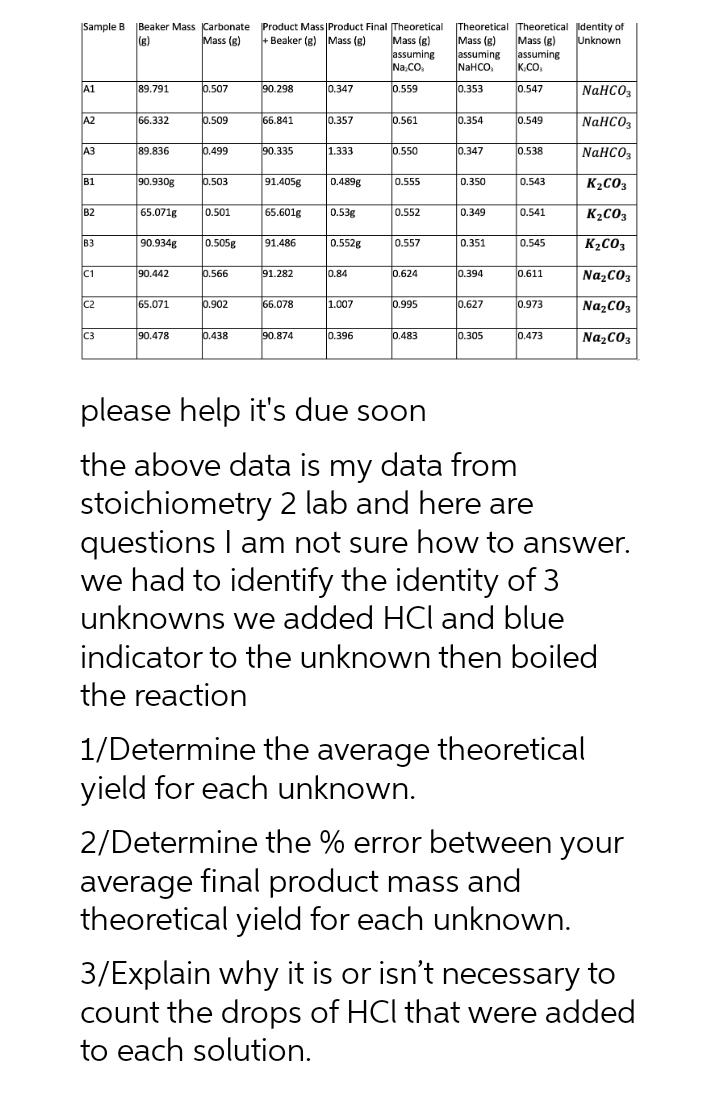Answered step by step
Verified Expert Solution
Question
1 Approved Answer
Sample B A1 A2 A3 B1 B2 83 C1 C2 C3 Beaker Mass Carbonate (8) Mass (g) 89.791 66.332 89.836 90.930g 65.071g 90.934g 90.442

Sample B A1 A2 A3 B1 B2 83 C1 C2 C3 Beaker Mass Carbonate (8) Mass (g) 89.791 66.332 89.836 90.930g 65.071g 90.934g 90.442 65.071 90.478 0.507 0.509 0,499 0.503 10.501 0.505g 0.566 0.902 0.438 Product Mass |Product Final Theoretical +Beaker (g) Mass (g) Mass (g) 90.298 66.841 90.335 91.405g 65.601g 91.486 91.282 66.078 90.874 0.347 10.357 1.333 0.489g 0.53g 0.552g 0.84 1.007 0.396 assuming Na.CO, 0.559 0.561 0.550 0.555 0.552 0.557 0.624 0.995 0.483 Theoretical Theoretical Identity of Mass (g) Unknown Mass (g) assuming K.CO, 0.547 assuming |NaHCO. 0.353 0.354 0.347 0.350 0.349 0.351 0.394 0.627 0.305 0.549 0.538 0.543 0.541 0.545 0.611 0.973 0.473 NaHCO3 NaHCO3 NaHCO3 KCO3 KCO3 KCO3 NaCO3 NaCO3 NaCO3 please help it's due soon the above data is my data from stoichiometry 2 lab and here are questions I am not sure how to answer. we had to identify the identity of 3 unknowns we added HCl and blue indicator to the unknown then boiled the reaction 1/Determine the average theoretical yield for each unknown. 2/Determine the % error between your average final product mass and theoretical yield for each unknown. 3/Explain why it is or isn't necessary to count the drops of HCI that were added to each solution.
Step by Step Solution
There are 3 Steps involved in it
Step: 1
The detailed ...
Get Instant Access to Expert-Tailored Solutions
See step-by-step solutions with expert insights and AI powered tools for academic success
Step: 2

Step: 3

Ace Your Homework with AI
Get the answers you need in no time with our AI-driven, step-by-step assistance
Get Started


